By all measures, a visit to a temple isn't considered high priority on my travel itineraries and we happened to add Tran Quoc Pagoda to the list given that it's walking distance from our breakfast place; Phở Thế Béo.
Situated next to the picturesque Ho Tay, the largest freshwater lake in Hanoi, this temple also happened to be the oldest in the capital city, with history dating back to the 6th century.
Relocated in the 17th century to its current location, an island known as Golden Fish, foot access was provided via a short 50-meter causeway.
Under Buddhism, it was traditionally the norm for devotees to buy caged birds and release them in order to gain merits. Nowadays, people are more critical of this practice since we are better informed on the concept of supply and demand. So why contribute to such vicious cycles that go against the Buddhist practice?
Don't know what sculpture is this.
Let's stroll in!
A towering yet beautiful bonsai tree right next to the main temple door! Honestly, I thought bonsai was usually table-sized plants. Are they supposed to grow so big?
As with some temples, do note to wear modestly; meaning no sleeveless and no shorts. I should be wearing bermuda shorts although it wasn't that short to expose too much meat. Anyway, such rules appeared to be more for the fairer gender.
Entering the temple through the compassion road.
Long line of stone lotus topping the stone railing. Are you aware that lotus is the national flower for Vietnam? And in Buddhism, "lotus is symbolic of the highest spiritual attainment".
View of Ho Tay; translated as West Lake, this large lake spanned a perimeter of about 17 kilometers! Compared that Hoan Kiem Lake, which was only about 1.5 kilometers.
On the left of the compassion road, you would see a towering stupa (I would have called it a pagoda but in Vietnam, pagoda is the term used for temple). Built recently in 1998, its completion created an symbolic icon for this oldest temple Hanoi.
When I was young, I was so full of imagination that a stone mountain structure as above would be the background of an immersive storyline where demons and immortals fight for power and territory.
At 15 meters high, the stupa had 11 levels and topped with a nine-layer stone lotus. Each level had six doorways where statues of Buddha were placed.
For your viewing pleasure; curious me was always checking to see if there is a hidden pathway leading up. Well, not that possible as the base wasn't really wide in the first place.
Shorter stupas seemed to have some ancient tablets. By the way, while Tran Quoc Pagoda had a long history of over 1,500 years, the architecture I posted here was generally about 400 years old only, given the relocation.
Pavilions housing steles. A stele, according to Wikipedia, is "an upright stone slab or pillar bearing an inscription or design and serving as a monument, marker, or the like".
Even though Tran Quoc Pagoda is a Buddhist temple, there were also elements of Vietnamese folk religion. Mẫu Thượng Thiên is "one of the four heavenly mothers in the Four Palaces associated with Đạo Mẫu worship."
10 panels full of illustrations pertaining to the law of karma! I admit this do give a better representation of cause and effect, examples given were too simplistic.
Sometimes, things happen collectively, across a spectrum, and might not be balanced out full. For example, trying to be productive in work brings great blessing and prosperity - I don't deny it's necessary to be productive but just that alone hardly brings about blessing and prosperity.
Guess this is some kind of an ancestral hall.
These three statues were part of the Đạo Mẫu worship that I shared earlier, which was the worship of goddess mothers. These three were the Green Mother (for mountains and forests), White Mother (for water) and Red Mother (for sky).
I was most intrigued by this bundle. It's quite eerie as it felt like a person was being purposely covered up in red cloth, seemingly awaiting cleansing by the deities in the hall.
A multi-colored banner with the Chinese words for "Amitabha".
Coming to the main compound of Tran Quoc Pagoda, which had this imposing bodhi tree said to be a cutting of the original bodhi tree where Buddha himself attained enlightenment!
A windchime on the branch of the bodhi tree. To be honest, I believe Buddhism to be much more than the worship of a tree; not as if our merits would increase with a touch of this tree. What's more important is our behavior in life, towards oneself and others.
I was wondering the relevance of the deer from Nara until I googled and realized there was indeed a species of Vietnamese Sika Deer that were found in Northern Vietnam, although believe to be extinct in the wild.
Another stele but in English!
Was this like a donation list or something?
The four words on top referred to Tran Quoc Ancient Temple.
Inside of the hall - clean and relatively spacious, I was more surprised to see the ceiling fans in front of each altar! Some might argue they are eyesores for photo-taking!
Center altar that, similar to Ba Da Pagoda, had that interesting display layout with multiple tiers. In Singapore, and most countries, it would be at most three statues.
Random photos; I read from a few blogs that there was supposed to be a museum, although I appeared to have missed it. As expected, my friends were already with their "exploration" and I didn't want them to wait for me!
Enough time spent!
Last shot of the bodhi tree; I can't recognize a bodhi tree at first glance but I heard that the leaves were heart-shaped. From zooming in to the photographs I took, they did appear to be heart shaped.
End of post!
=====
Address
46 Đ. Thanh Niên, Trúc Bạch,
Tây Hồ, Hà Nội, Vietnam
Map
As above.



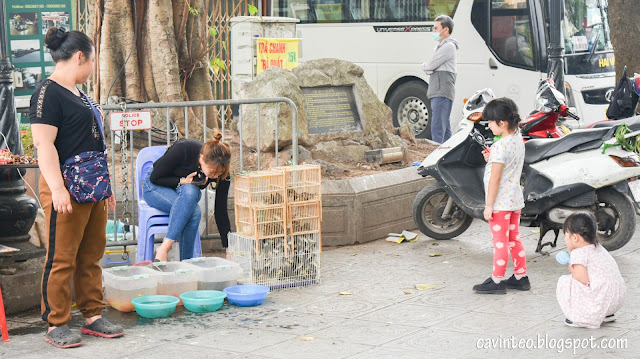






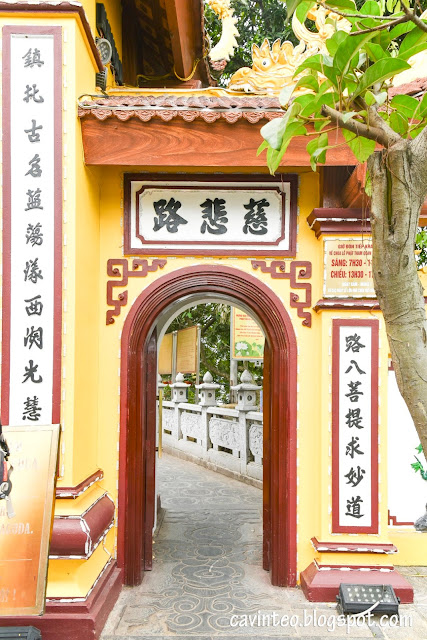

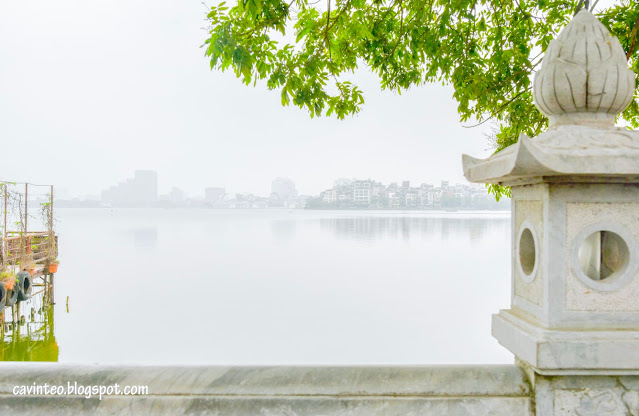














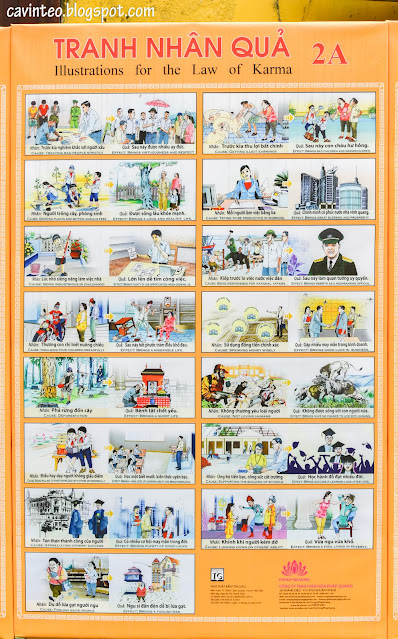
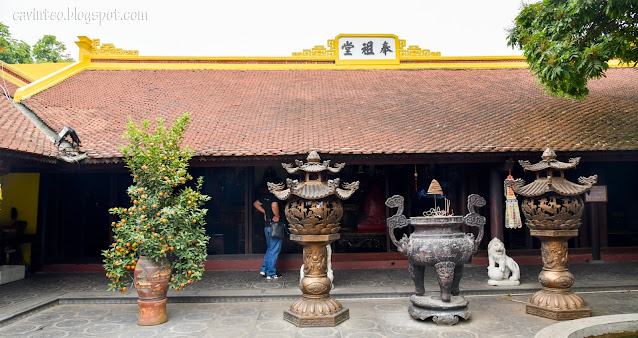

























No comments:
Post a Comment